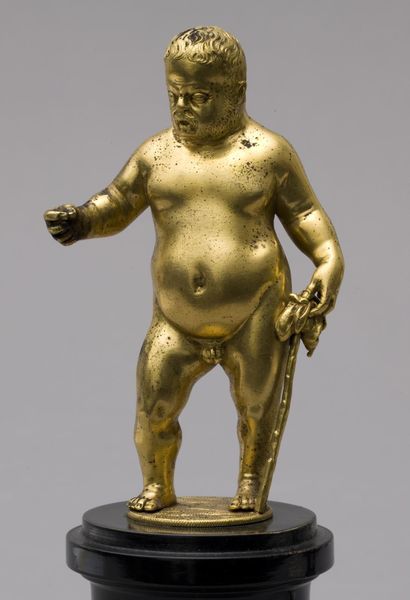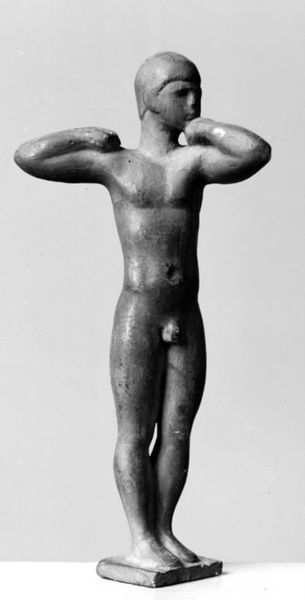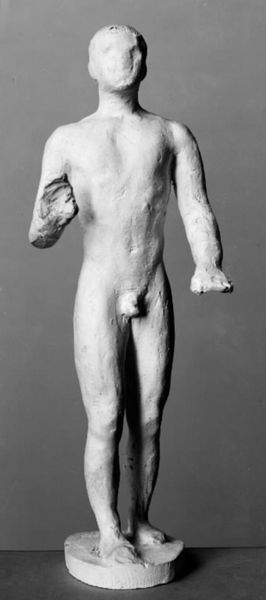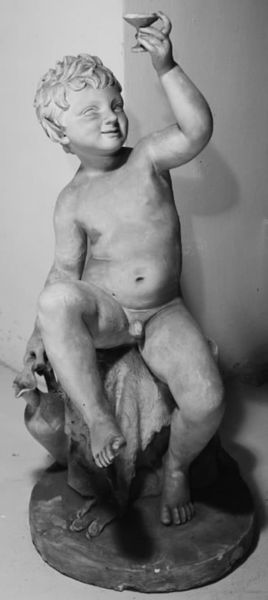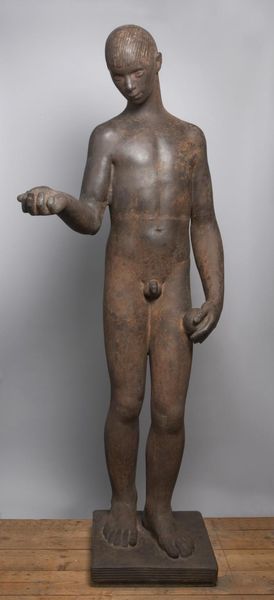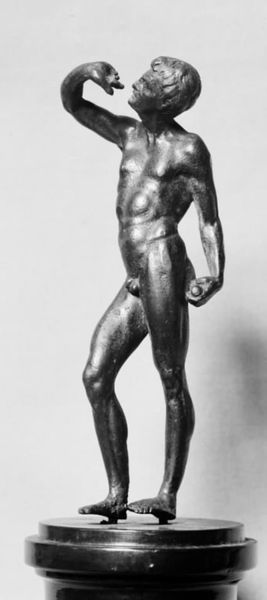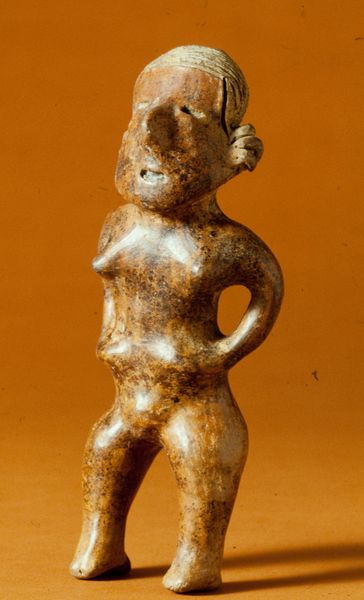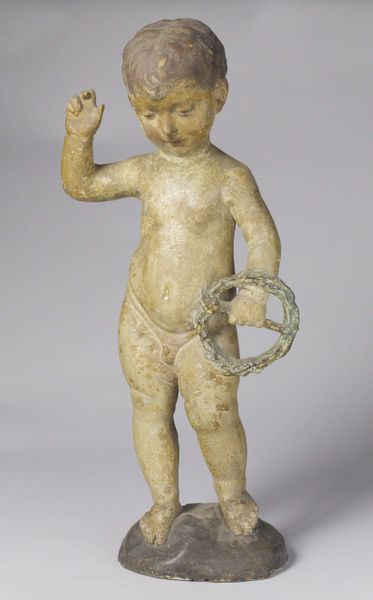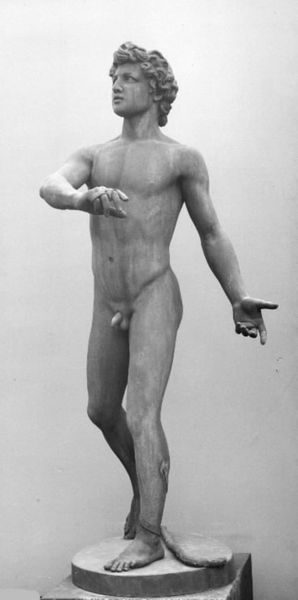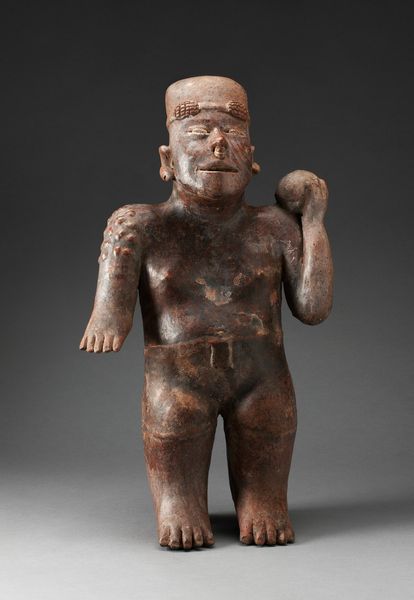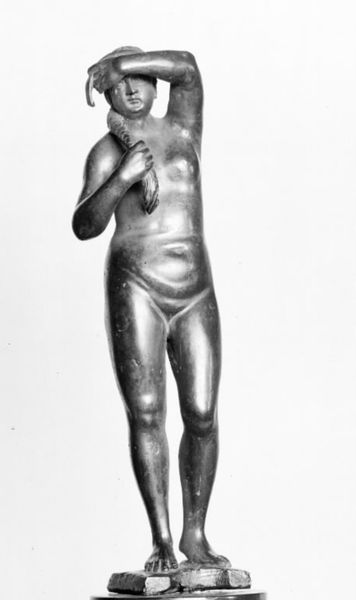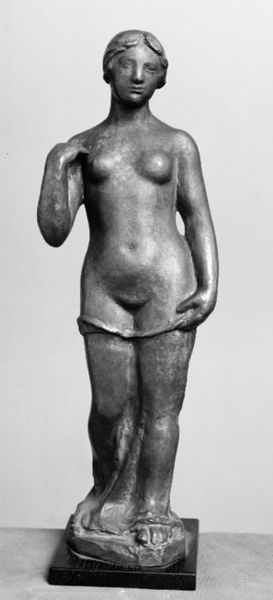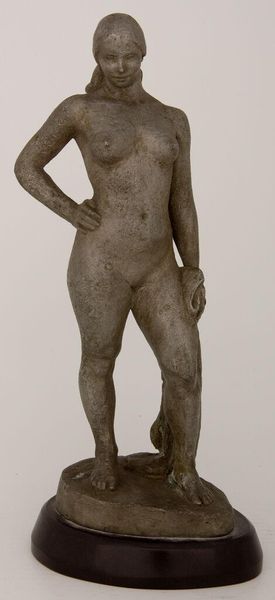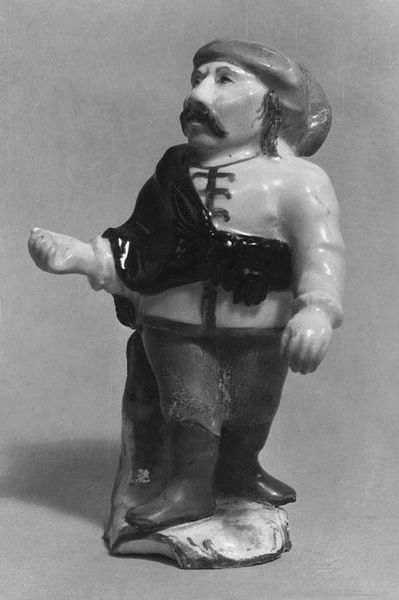
bronze, sculpture
#
portrait
#
sculpture
#
bronze
#
mannerism
#
figuration
#
sculpture
Dimensions: 13 cm (height) x 7.6 cm (width) x 5 cm (depth) (netto)
Editor: Here we have Giambologna's bronze sculpture, "Bacchus," created sometime between 1580 and 1608. The figure is… striking, to say the least. The god of wine, but almost cherubic. What symbolic meanings are embedded in its creation and the decision to depict the god of wine in such a corpulent style? Curator: Ah, Bacchus! A figure drenched in symbolism, not just as a deity of wine, but as a conduit to ecstatic liberation. Notice the fullness of the figure, it isn’t merely corpulence; it is abundance, the fertile generosity of the earth made manifest. His body, as a vessel, literally and figuratively embodies overflowing plenitude, the very spirit of wine he embodies. How does that visual weight contrast with, say, classical portrayals of idealized athletic figures? Editor: It definitely goes against those classical ideas! I guess I’m used to seeing Greek gods portrayed with more, shall we say, restraint? This feels deliberate, an almost defiant rejection of those earlier styles. Curator: Precisely! This deviation reflects a Mannerist sensibility, where artists consciously distorted proportions and embraced artifice. But what does this specific image signify? I invite you to remember: wine, intoxication, and ecstasy are disruptive forces – social conventions momentarily dissolved! Bacchus, by overflowing expected boundaries, embodied such societal overturning. He is the "liberator," freeing us to shed constraint. In this sculpture, is Bacchus only the liberator of individuals from restraint? Editor: Hmmm. Perhaps also freeing the artist from artistic constraint? It sounds like Giambologna was consciously breaking with artistic traditions, just like Bacchus breaks with social norms. Curator: Excellent! We’re circling back to understanding the symbol – he also is that. Symbols are never unitary; they weave elaborate threads, inter-referencing and inter-illuminating cultural and artistic memory. Editor: So it's not just about wine; it's about freedom, abundance, and challenging expectations, artistically and socially. I learned a lot – thanks! Curator: Likewise! Thinking about symbols always enriches the experience and cultural meaning, helping make that artistic leap and broaden awareness.
Comments
No comments
Be the first to comment and join the conversation on the ultimate creative platform.
